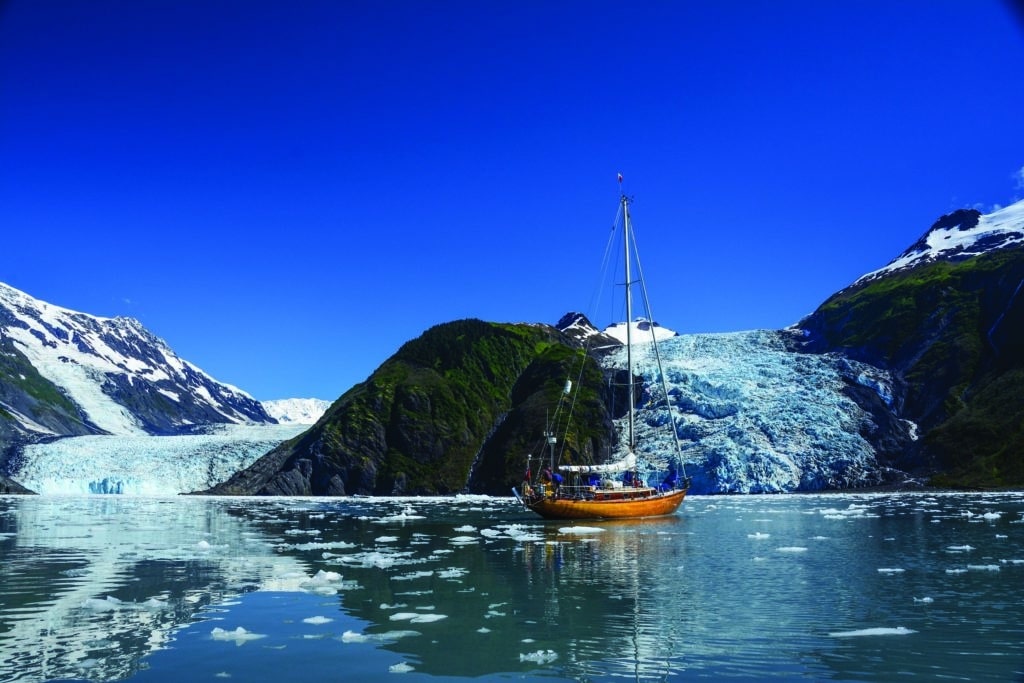
Prince William Sound Resources
NOAA charts are available as free downloads from the NOAA site for use with many charting systems, including OpenCPN. Detailed charts for the area are very accurate, though there are some parts of Prince William Sound where warnings remain about uncharted uplift resulting from the 1964 earthquake and tsunami. Jim and Nancy Lethcoe’s Cruising Guide to Prince William Sound, fifth edition (2009; Prince William Sound Books; $65), is a fantastic and essential resource for cruising the sound. The Exploring Series cruising guides for the Inside Passage of British Columbia and southeast Alaska, by Don Douglass and Réanne Hemingway-Douglass (Fine Edge Nautical & Recreational Publishing), give excellent coverage for anyone following the coastal route.
Weather: Last Frontier
Not surprisingly, weather in Alaska — appropriately nicknamed the Last Frontier — can be volatile. The cruising season is short, generally from mid-June to mid-August. When the northeast Pacific high is settled in the Gulf of Alaska, there can be quite long periods of stable weather and moderate winds. However, it’s always possible that depressions bringing strong winds can sweep in from the Aleutians, even in midsummer. Alaskan cruisers need to be well equipped with strong ground tackle and good anchoring techniques.
History: The Infamous Spill
In March 1989, the tanker Exxon Valdez ran aground on Bligh Reef in Prince William Sound. Eleven million gallons of crude oil were spilled into the sound, creating a huge ecological disaster affecting the abundant wildlife of the area. Exxon spent over $2 billion on cleanup efforts. It has taken over two decades for wildlife to return to something approaching its previous abundance, and there are now few signs of the damage done by the spill.
Getting There
There are two usual routes to Prince William Sound from the West Coast of the United States. The offshore route goes via Hawaii in late spring to Kodiak, arriving in early to mid-June. The coastal route goes up the Inside Passage of British Columbia and southeast Alaska, perhaps with shorter passages offshore when conditions are favorable. There is then a 350-mile passage across the northern Gulf of Alaska.








